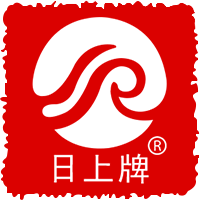The Roots vacuum pump is a vacuum pump without internal compression. Usually, the compression ratio is very low, so the high and medium vacuum pumps need the foreline pump. A vacuum pump that realizes pumping by moving a gas by a pressing action of a pair of leaf-shaped rotors in a pump chamber in synchronization and reverse rotation. The Roots vacuum pump is a mechanical vacuum pump with a pair of synchronous high-speed rotating sole-shaped rotors. The pump can not be pumped separately. The front stage needs to be equipped with an oil seal, a water ring, etc.
Its structure and working principle are similar to those of the Roots blower. When it is working, its suction port is connected with the vacuum pump or the main pump of the vacuum system. The vacuum pump has no contact between the rotor and the rotor, and between the rotor and the pump casing, and the gap is generally 0.1 to 0.8 mm; no oil lubrication is required. The rotor profile has a circular arc, an involute, and a cycloid. The volume utilization of the involute rotor pump is high, and the machining accuracy is easy to ensure, so the rotor type line is more involute type. The speed of the Roots vacuum pump can be as high as 3,450 to 4,100 rpm; the pumping rate is 30 to 10,000 liters / sec (1 liter = 10 - 3 m 3); the ultimate vacuum: 6.5 × 102 Pa for single stage, 1 for two stages × 103 Pa.
The vacuum removal of the Roots vacuum pump depends on the structure and manufacturing accuracy of the pump itself, as well as the vacuum of the foreline pump. In order to increase the vacuum of the pump, a Roots vacuum pump can be used in series. The Roots vacuum pump works like a Roots blower. Due to the continuous rotation of the rotor, the pumped gas is sucked from the intake port into the space v0 between the rotor and the pump casing, and then discharged through the exhaust port. Since the v0 space is fully closed after inhalation, the gas is not compressed and expanded in the pump chamber. However, when the top of the rotor turns over the edge of the exhaust port and the v0 space communicates with the exhaust side, since the gas pressure on the exhaust side is high, a part of the gas is returned to the space v0, so that the gas pressure suddenly increases. When the rotor continues to rotate, the gas exits the pump. The Roots vacuum pump has two "8"-shaped rotors mounted perpendicularly to each other on a pair of parallel shafts in the pump chamber, and a pair of gear belts with a transmission ratio of 1 are in reverse synchronous rotational motion. Between the rotors, there is a certain gap between the rotor and the inner wall of the pump casing to achieve high speed operation.
